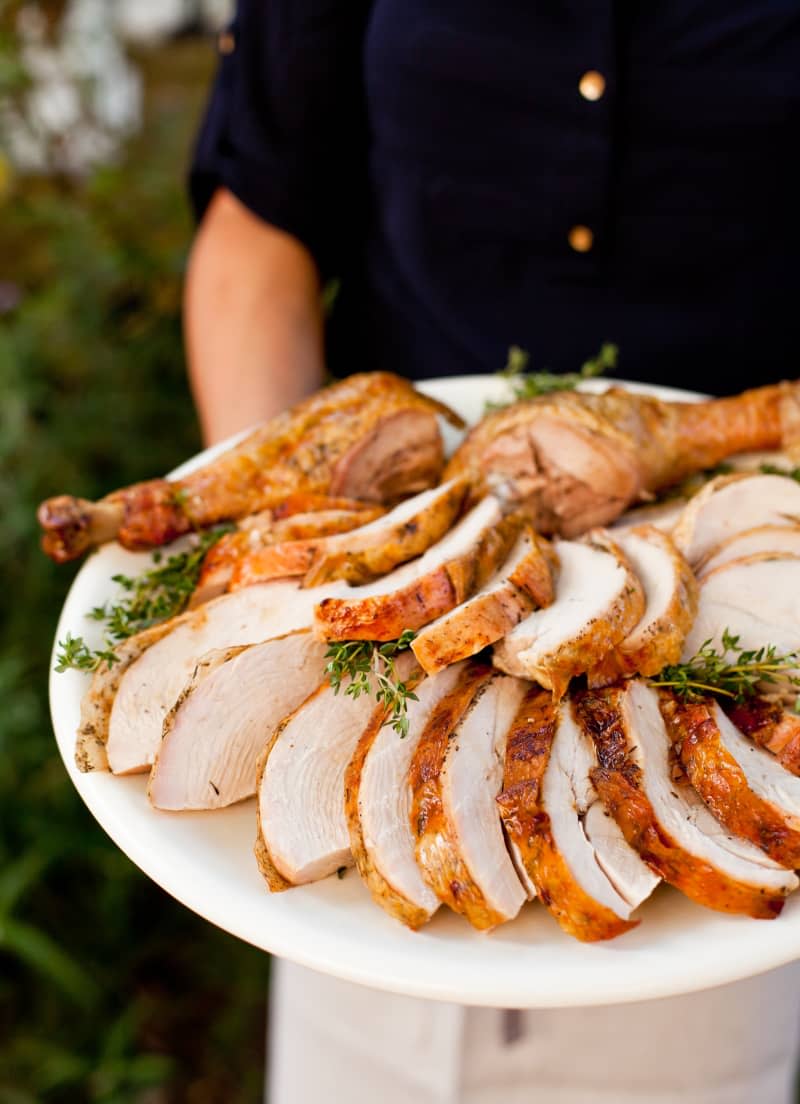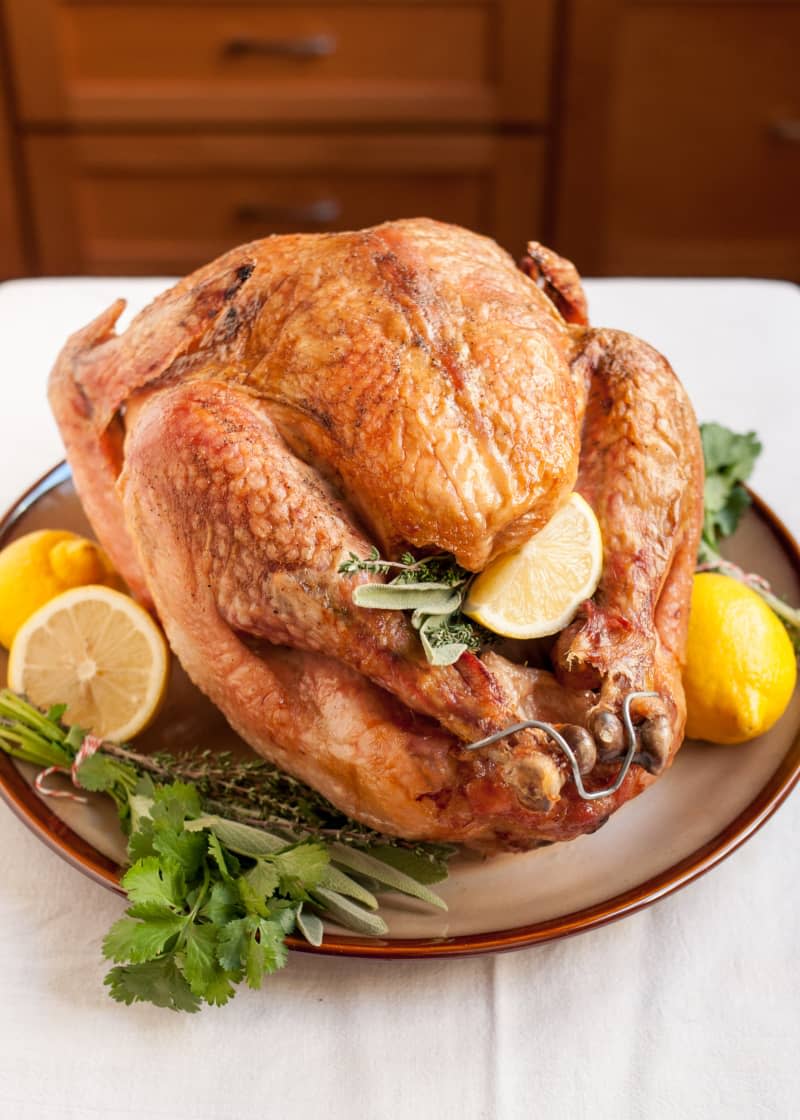Turkey Still Frozen? Don't Panic and Try These Two Things

Even the most well-seasoned cooks have experienced the dread of the turkey still being frozen or half frozen on Thanksgiving morning. Maybe you decided to host last minute, or your fridge was so packed with holiday meal prep, that big bird in your fridge just did not thaw.
Don’t panic — whether you’re 24 hours out from roasting the turkey or your family is arrive later in the afternoon, you’ve got options. This handy guide will walk you through what to avoid, as well as how to thaw or roast your turkey depending on its near frozen state.
Mistakes to Avoid When Quick-Thawing Your Turkey
First, let’s talk about what you shouldn’t do when thawing a turkey, no matter how tempted you may be. When thawing a turkey, be sure to avoid the following:
Leaving your turkey on the counter to thaw for a few hours
Submerging it in hot water
Wrapping it with a heating pad
Blasting it with a hair dryer
Taking any other shortcuts on thawing
The risk of giving you and your guests food poisoning is just too great.
So, why can’t you do any of these things? Besides looking silly with a hair dryer, if any part of the turkey is within the temperature “danger zone” of 40°F to 140°F for longer than two hours, the likelihood increases that it has developed unsafe levels of bacteria and related toxins. This means that even if the inside of your turkey is still frozen, once the outside thaws to above 40°F, it’s in the danger zone.
Even cooking your turkey thoroughly in the oven doesn’t guarantee that the turkey is safe to eat — most bacteria will be destroyed, but the illness-causing toxins remain. There are times when you can bend the food safety rules and times when you shouldn’t. This is just one of those times when it’s not worth the risk.

If You Have a Few Hours to Spare
The best way to thaw a turkey is to leave it in the fridge for a few days, but if you’re reading this, then that option has probably passed you by. Not to worry — you can also thaw your turkey more quickly by submerging it in cold water.
Use cold water. Make sure you’re using cold tap water — not warm or hot. The cold water will thaw your turkey, but keep it out of the temperature danger zone.
Completely submerge the bird in water. This is both so it will thaw evenly and also to make sure everything stays chilled and safe. If your turkey doesn’t fit in your sink or biggest pot, just be sure to flip it frequently.
Change the water every 30 minutes. This is so the water doesn’t warm up to room temperature, which would (you guessed it!) put the turkey in the danger zone.
Thawed this way in cold water, estimate roughly 30 minutes for every pound of turkey (so, an 8-pound turkey will take 4 hours to thaw using this method). This can of course take a while for a large turkey, so be sure to plan the rest of your meal — and the dinner bell — accordingly. Personally, I like this method the best if my turkey has already done some thawing in the fridge but is still partially frozen. The cold water helps it finish thawing the rest of the way time for dinner.

If There’s No Time to Thaw
If you’re up against the clock and have no time left for even the “quick” cold-water thaw, then just cook the turkey frozen. It’s perfectly safe to cook a frozen or partially frozen turkey in the oven — you just need to allow some extra cooking time, according to the USDA.
Estimate 50 percent longer cooking time for a completely frozen turkey and around 25 percent longer for a partially frozen turkey. (For example, a completely thawed unstuffed turkey that’s 18 pounds will take roughly 4 hours to cook, and a frozen turkey will take around 6 hours). In either case, check the temperature and cook the turkey until it registers 165°F in both the breast and the thigh.
The advantage of cooking a frozen turkey is that you still get to sit down to dinner in a timely manner with none the wiser for your turkey snafu earlier in the day. The disadvantage is that you’re stuck with a fairly basic roast turkey — no brining, deep-frying, or any other fancy turkey techniques here. You can, however, brush the turkey with butter and rub it with salt, pepper, and spices partway through cooking to give it some color and flavor.
But even when cooking a frozen turkey, you can still count on plenty of crispy skin and tender meat, and most importantly, Thanksgiving is saved.

